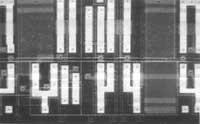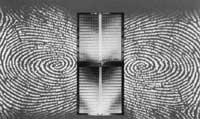Smart Computers
1994/04/01 Martinez Lizarduikoa, Alfontso Iturria: Elhuyar aldizkaria
Is it possible to apply to the purely physical machine an intelligence similar to that of human beings? This is the goal of the “Artificial Intelligence” program. In humans the support of intelligence is organic material and in the case of computers it would be silicon if this project was implemented. But this material difference is not of great importance to researchers in the world of artificial intelligence.
For them this would be like the blood difference between two people in biology, or as differences in skin color, or differences in human metabolism chemistry. If in those who work with artificial intelligence the machine was able to reproduce all the cognitive activities that the brain has, that computer would be human and if we are not willing to accept it, we would have a new form of racism.

Artificial intelligence experts distribute computers for generations. It seems that the operating speed of computers in each generation is multiplied by ten numbers. The first generation of computers appeared in 1950, the “vacuum valves” being the basic elements of the structure. The second generation is marketed in 1958 and is the simplest element with “transistor”. The third generation was born in 1963 through the special IBM 360 computer. In 1978 the fourth generation was created.
Computers were processing information faster and more and more memory was being built. In that optimistic environment, some experts came to say: In 1990 we will be able to structure a chip with millions of connections and then our computers will become as compact as the brain. When this happens, we will be able to build an artificial system (computer) with brain capacity, which will allow us to achieve the objective of the program called artificial intelligence.
At present, in 1994, all those expectations that existed ten years ago have not been met at all. Machines that want to repeat the functioning of the brain find an insurmountable obstacle: perception. As we know today, the relationship with objects found in external reality (through vision, taste, hearing or touch) is a supercomplex process that cannot be mechanically replicated. There is an outer universe, but our brain has many sheets to detect that outer world, which have put an insurmountable barrier to the silicon machines we have invented.
Nowadays, therefore, research programs in “Artificial Intelligence” have been reduced, being robotics, intelligent programs or translation the fields on which we are mainly researching, pragmatists, but that can depend on our capacity. Machines that believe in the future to reproduce the intelligence of our brain must be more flexible, able to learn and make unclean decisions. They must learn to modify their programming based on the information received and have a much wider processing speed and memory. Therefore, it does not seem that in the future we have silicon competitors, because we still do not understand our brain very well.

Gai honi buruzko eduki gehiago
Elhuyarrek garatutako teknologia





